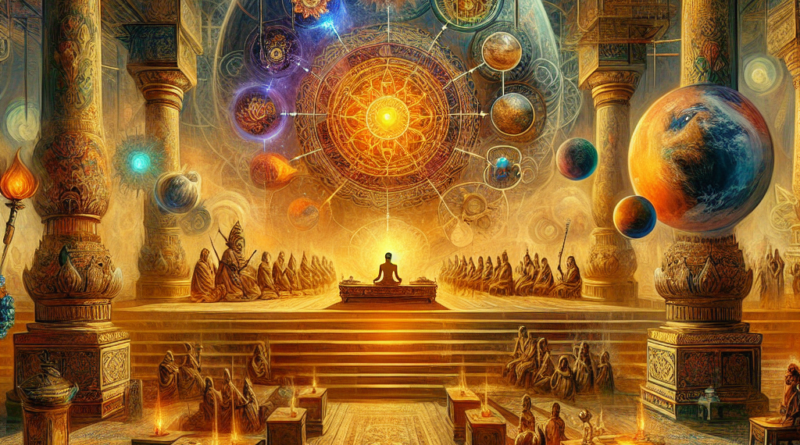Unlocking the Mysteries of Hindu Rituals
Title: The Scientific Significance of Hindu Rituals: Exploring the Intersection of Tradition and Science in Indian Culture
Introduction:
Hinduism, one of the world’s oldest and most complex religions, is deeply rooted in rituals that have been practiced for thousands of years. While these rituals are often seen as mere traditions or religious practices, many of them actually hold significant scientific significance. In this article, we will delve into the scientific aspects of Hindu rituals, exploring their historical context, cultural relevance, and contemporary applications.
Historical Context:
The origins of Hindu rituals can be traced back to the ancient Vedic texts, which were composed over 3,000 years ago. These texts contain detailed descriptions of various rituals and ceremonies, many of which are still practiced today. The early Hindus believed that performing these rituals would invoke the gods and bring about prosperity, health, and spiritual growth.
Many of the rituals prescribed in the Vedas have scientific explanations behind them. For example, the practice of lighting a lamp or incense during puja (worship) is believed to purify the air and create a positive atmosphere. The chanting of mantras during rituals is thought to create specific vibrations that resonate with the universe, promoting mental clarity and focus.
Cultural Significance:
Hindu rituals play a crucial role in Indian culture, serving as a means of connecting with the divine and maintaining spiritual harmony. These rituals are deeply ingrained in the fabric of society, shaping everyday life, festivals, and ceremonies. From birth to death, Hindus perform a variety of rituals that mark important milestones and events in life.
One of the most significant rituals in Hindu culture is the practice of yoga and meditation. These ancient practices are not only spiritual in nature but also have proven scientific benefits, such as reducing stress, improving mental health, and enhancing physical well-being. The breathing techniques and postures prescribed in yoga have been studied extensively and are now widely practiced around the world for their health benefits.
Contemporary Relevance:
In the modern world, where science and technology dominate every aspect of life, the scientific significance of Hindu rituals is becoming increasingly recognized. Many of the practices that were once dismissed as superstition are now being validated by scientific research.
For example, the practice of pranayama, or breath control, has been shown to have a profound impact on the respiratory and cardiovascular systems. Studies have found that deep breathing techniques can lower blood pressure, improve lung function, and reduce stress levels. Similarly, the use of turmeric and other herbs in rituals and ceremonies has been found to have anti-inflammatory and antioxidant properties.
Unlocking the Mysteries of Hindu Rituals
Furthermore, the concept of karma, which forms the basis of many Hindu rituals, is now being studied in the field of quantum physics. Scientists are exploring the idea that our actions and intentions have a direct impact on the world around us, echoing the ancient Hindu belief in the interconnectedness of all living beings.
Conclusion:
Hindu rituals are not just cultural practices or religious traditions; they are a reflection of the deep wisdom and scientific knowledge of the ancient sages. By understanding the scientific significance of these rituals, we can gain a deeper appreciation for the intricate relationship between tradition and science in Indian culture. As we continue to explore the intersection of spirituality and science, we may uncover even more profound insights into the nature of reality and the universe.

